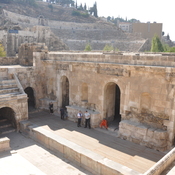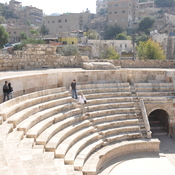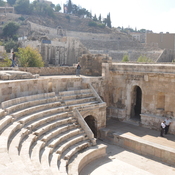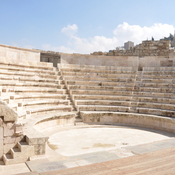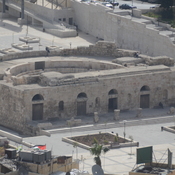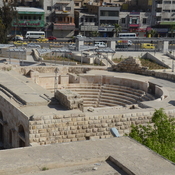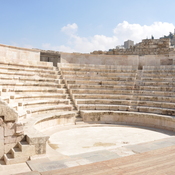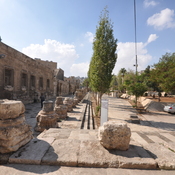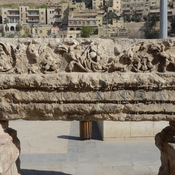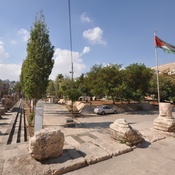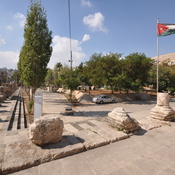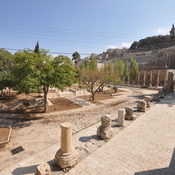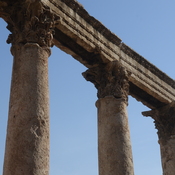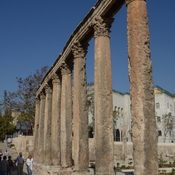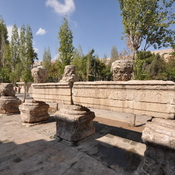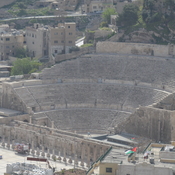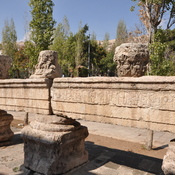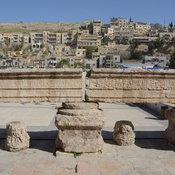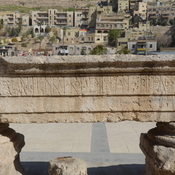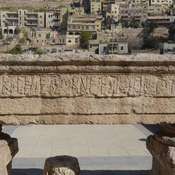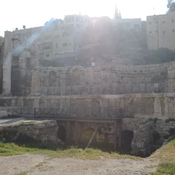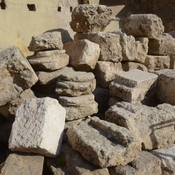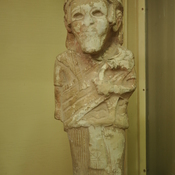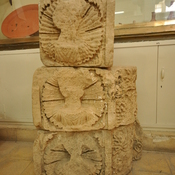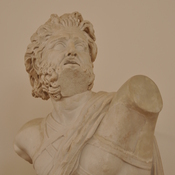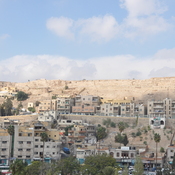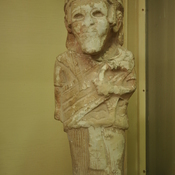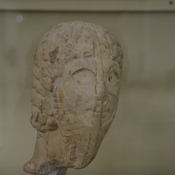Il n'y a pas une annotation en français. Présenté est une annotation en Anglais.
The theatre was built during the reign of Antonius Pius (138-161 CE). The large and steeply raked structure could seat about 6,000 people: built into the hillside, it was oriented north to keep the sun off the spectators.
It was divided into three horizontal sections (diazomata). Side entrances (paradoi) existed at ground level, one leading to the orchestra and the other to the stage. Rooms behind these entrances now house the Jordanian Museum of Popular Traditions on the one side, and the Amman Folklore Museum on the other side.
The highest section of seats in a theatre was (and still is) called "The Gods". Although far from the stage, even there the sightlines are excellent, and the actors could be clearly heard, owing to the steepness of the cavea.1
Références
- ↑Wikipedia: Roman theater (Jordan)
The theatre was built during the reign of Antonius Pius (138-161 CE). The large and steeply raked structure could seat about 6,000 people: built into the hillside, it was oriented north to keep the sun off the spectators.
It was divided into three horizontal sections (diazomata). Side entrances (paradoi) existed at ground level, one leading to the orchestra and the other to the stage. Rooms behind these entrances now house the Jordanian Museum of Popular Traditions on the one side, and the Amman Folklore Museum on the other side.
The highest section of seats in a theatre was (and still is) called "The Gods". Although far from the stage, even there the sightlines are excellent, and the actors could be clearly heard, owing to the steepness of the cavea.1
Références
- ↑Wikipedia: Roman theater (Jordan)
Het theater is samen met het naastgelegen odeum gebouwd in de 2e eeuw na Chr., tijdens de regering van keizer Antoninus Pius. Het biedt plaats aan 6.000 toeschouwers op 33 rijen zitplaatsen en is daarmee het grootste antieke theater van Jordanië. Het theater ligt direct aan het oude forum en is tegen de heuvel aan gebouwd.













































